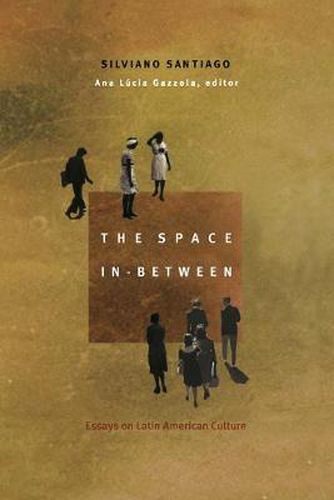Readings Newsletter
Become a Readings Member to make your shopping experience even easier.
Sign in or sign up for free!
You’re not far away from qualifying for FREE standard shipping within Australia
You’ve qualified for FREE standard shipping within Australia
The cart is loading…






This title is printed to order. This book may have been self-published. If so, we cannot guarantee the quality of the content. In the main most books will have gone through the editing process however some may not. We therefore suggest that you be aware of this before ordering this book. If in doubt check either the author or publisher’s details as we are unable to accept any returns unless they are faulty. Please contact us if you have any questions.
Silviano Santiago has been a pioneer in the development of concepts crucial to the discourse of contemporary critical and cultural theory, especially postcolonial theory. The notions of hybridity and the space in-between have been so completely absorbed into current theory that few scholars even realise these terms began with Santiago. He was the first to introduce poststructuralist thought to Brazil - via his publication of the Glossario de Derrida and via his role as a prominent teacher and member of numerous federal commissions. The Space In-Between translates into English for the first time many of his seminal essays and, in the process, introduces the thought of one of Brazil’s foremost critics and theorists of the late twentieth century. Transcending the study of a specific national literature, Santiago’s work creates a theoretical field that defines the problematics of cultural difference and goes beyond the traditional perspectives of comparative literature. In Why and For What Purpose Does the European Travel?, for example, he examines the pedagogical and modernising mission of Western voyagers from the conquistadors to the present. In another essay he deconstructs the ideas of original and copy, and unpacks their implications for the notions of so-called dominant and dominated cultures. Santiago also confronts questions of cultural dependency in this volume and analyses the problems involved in the imposition of an alien European history, the cultural displacements experienced by the Indians through their religious conversion, and the hierarchical suppression of native and Negro values. Written and translated in lucid, elegant, and non-technical language, The Space In-Between will provide insights and perspectives that will interest cultural and literary theorists, postcolonial scholars, and other students of contemporary culture.
$9.00 standard shipping within Australia
FREE standard shipping within Australia for orders over $100.00
Express & International shipping calculated at checkout
This title is printed to order. This book may have been self-published. If so, we cannot guarantee the quality of the content. In the main most books will have gone through the editing process however some may not. We therefore suggest that you be aware of this before ordering this book. If in doubt check either the author or publisher’s details as we are unable to accept any returns unless they are faulty. Please contact us if you have any questions.
Silviano Santiago has been a pioneer in the development of concepts crucial to the discourse of contemporary critical and cultural theory, especially postcolonial theory. The notions of hybridity and the space in-between have been so completely absorbed into current theory that few scholars even realise these terms began with Santiago. He was the first to introduce poststructuralist thought to Brazil - via his publication of the Glossario de Derrida and via his role as a prominent teacher and member of numerous federal commissions. The Space In-Between translates into English for the first time many of his seminal essays and, in the process, introduces the thought of one of Brazil’s foremost critics and theorists of the late twentieth century. Transcending the study of a specific national literature, Santiago’s work creates a theoretical field that defines the problematics of cultural difference and goes beyond the traditional perspectives of comparative literature. In Why and For What Purpose Does the European Travel?, for example, he examines the pedagogical and modernising mission of Western voyagers from the conquistadors to the present. In another essay he deconstructs the ideas of original and copy, and unpacks their implications for the notions of so-called dominant and dominated cultures. Santiago also confronts questions of cultural dependency in this volume and analyses the problems involved in the imposition of an alien European history, the cultural displacements experienced by the Indians through their religious conversion, and the hierarchical suppression of native and Negro values. Written and translated in lucid, elegant, and non-technical language, The Space In-Between will provide insights and perspectives that will interest cultural and literary theorists, postcolonial scholars, and other students of contemporary culture.